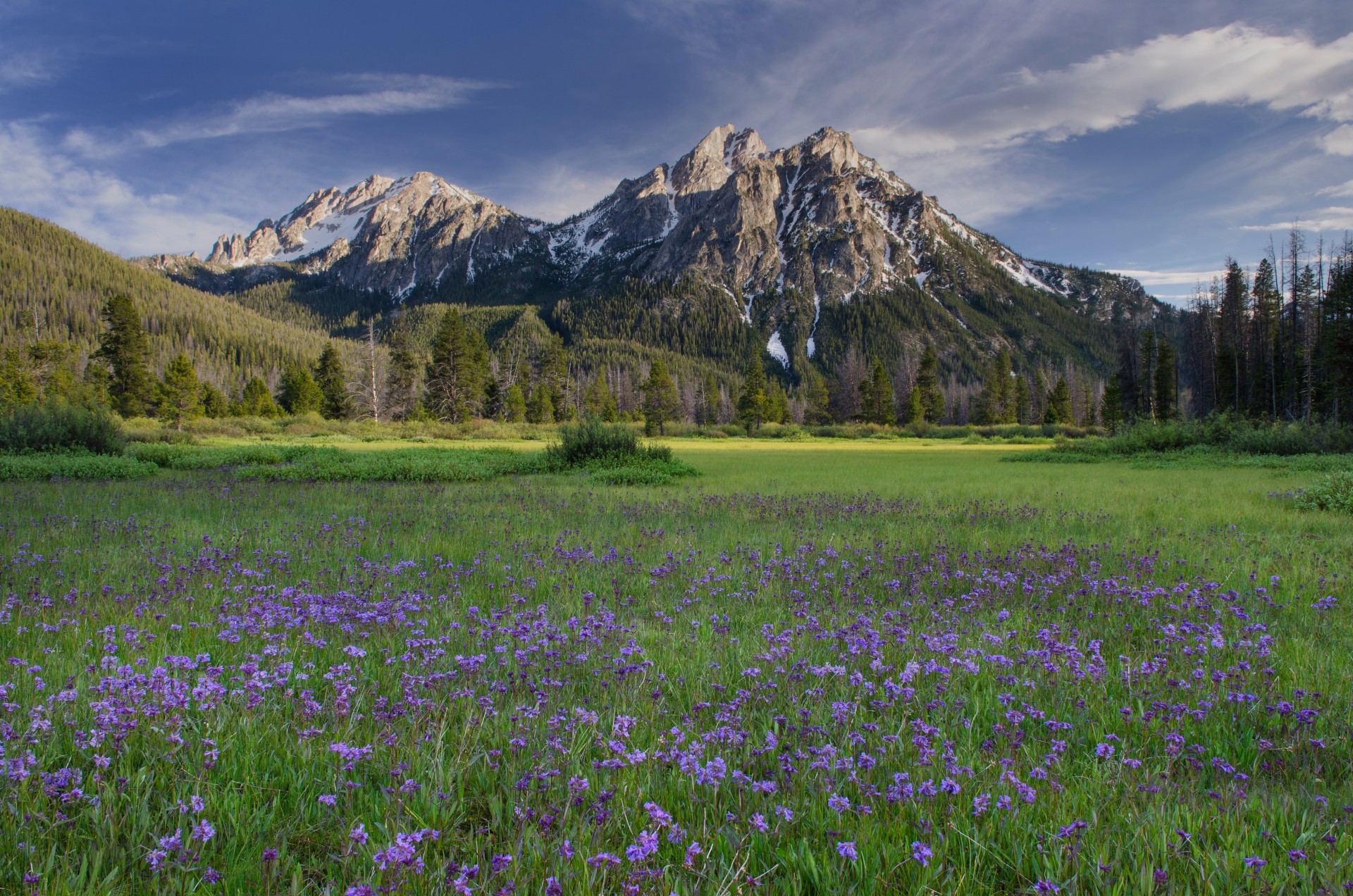While many flowers don’t start to appear until the end of May/beginning of June at higher elevations, they are a welcome sight after a long winter. Below are some wildflower facts for you to keep in mind as you are hiking in the SNRA this summer.
Popular SNRA destinations with spring and summer flowers
Pettit Lake
Fourth of July Lake
Alpine Way Trail
Bench Lakes Trail
Marshall Lake
White Cloud Loop
Elk Meadow
Common flowers of the SNRA
The one that looks like a brilliant yellow bouquet dotting the hillsides every spring is the cousin of the sunflower- The arrow-leaved balsamroot.
Others in the area include
Sego or the mariposa lily
Phlox
Camas
Fireweed
Did you know?
Did you know that it’s illegal to pick certain wildflowers in Idaho? According to Idaho statutes, title 18, chapter 39, 18-3913, it is illegal to pick protected wildflowers. Visit Section 18-3913 – Idaho State Legislature for more details and a list of the protected genera Section 18-3911 – Idaho State Legislature.
And while there might be laws in place to protect certain plant species it’s important to remember that wildflowers are important for the habitat of birds, bees, and other Idaho wildlife. They support entire ecosystems for pollinators and other creatures. So take a picture and leave the plant. It would soon perish after taking it so leave it be.
National Pollinator week- mid-June
While many of us think of the bee as being the top pollinator, other creatures are also hard at work pollinating plants within the SNRA. Among them -ants, beetles, butterflies, flies, birds, hummingbirds, and moths. The pollinator populations in Idaho mountain areas have been on the decline for various reasons so it’s another good reason not to do these creatures any harm and leave the flowers where you find them. You can learn more at Attracting Pollinators to Your Garden Using Native Plants.
A final word-weeds!
Noxious weeds/invasive plants are one of the largest disruptors of ecosystems. A plant reaches this unwanted status of being noxious when it is considered to be injurious to public health, agriculture, recreation, wildlife, or property. Their seeds are often spread through wind, water, animals, machinery, and people unknowingly carrying seed and plant parts from one location to another. Here are some tips to help reduce the spread when hiking in the SNRA:
Clean your hiking boots before and after trips
Check your gear and your pets for seeds
Stay on designated trails
Educate yourself- visit Control Strategies — Invasive Species of Idaho




